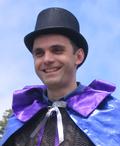Cited By
View all- Korkut J(2023)A Proof Tree Builder for Sequent Calculus and Hoare LogicElectronic Proceedings in Theoretical Computer Science10.4204/EPTCS.375.5375(54-62)Online publication date: 10-Mar-2023
- Grey SGordon N(2023)Motivating Students to Learn How to Write Code Using a Gamified Programming TutorEducation Sciences10.3390/educsci1303023013:3(230)Online publication date: 22-Feb-2023
- Chiarelli VMarkova NMuldner K(2023)Evaluating the Utility of Notional Machine Representations to Help Novices Learn to Code TraceProceedings of the 2023 ACM Conference on International Computing Education Research - Volume 110.1145/3568813.3600119(314-328)Online publication date: 7-Aug-2023
- Show More Cited By




